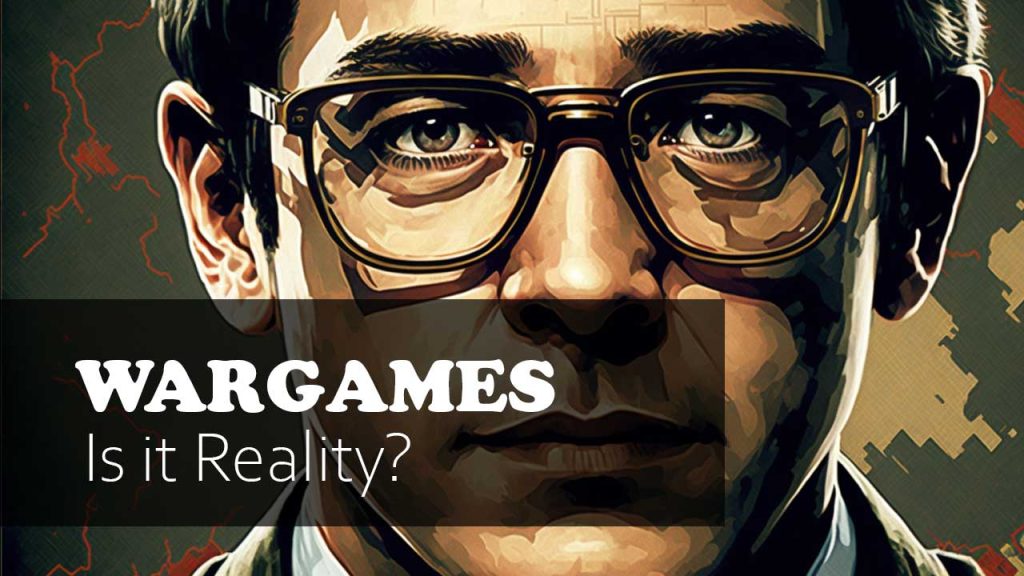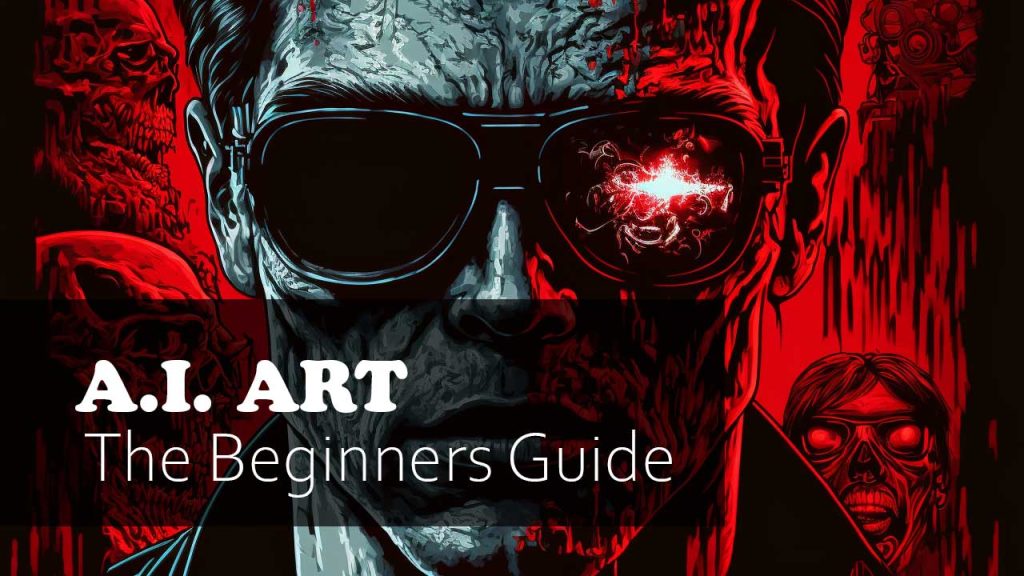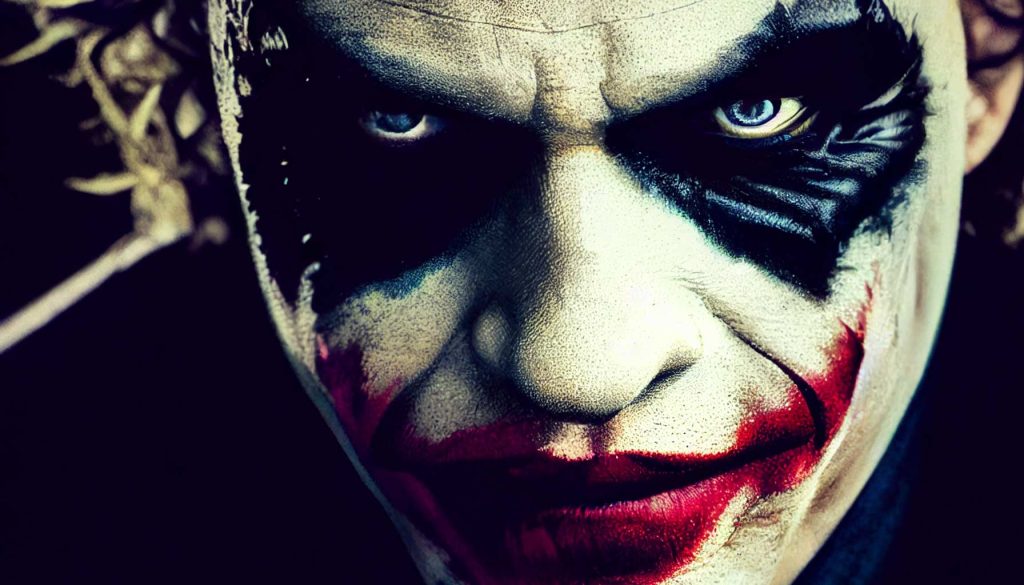What should you know about AI-Generated Art?
You might remember Cyberdyne Systems Model 101. That’s how it all started. Yep, with a Hollywood Blockbuster starring good old Arnold Schwarzenegger as the Terminator. An AI-Generated Robot with the goal to terminate the human species.
Another warning about AI-Generated Software was Wargames. In the 80ies, Hacking was huge. Playing Video Games in Arcades and coding became for a lot of young nerds an obsession. And one Hacker found his back door into a military central computer programmed with Artificial Intelligence. The program was programmed to learn on its own. Joshua. Huuaa…

My Blog is about AI Art. Yep, that’s right. Writing text (called prompting) to feed the AI Generator with ideas, thoughts, and any kind of nonsense, realistic or surreal inputs you can imagine. The output of AI-Generated Art is incredibly fast, and incredibly fascinating. It’s like cooking. You never know how your cake will taste, right?
A short explanation about AI Art: AI-generated art refers to artwork that has been created or produced using artificial intelligence algorithms and technology. This can include a wide range of media, such as paintings, drawings, music, and even poetry. Some AI-generated art is created entirely by algorithms, while others involve some level of human input or direction. AI-generated art has the potential to change the way we create and appreciate art, and it has already been used in a variety of applications, from creating novel pieces of art to generating content for video games and movies.
How is AI-generated art created?
There are four distinctive ways that Artificial Intelligence (software-based machine learning) is being created, programmed and developed.
- Artificial Intelligence is basically machine learning:
In this approach, an AI system is trained on a dataset of human-generated art, such as paintings or music. The system then uses this training to generate new pieces of art that are similar to the examples in the training dataset. - The software works with genetic algorithms:
In this approach, an AI system creates a large number of possible artworks and then uses an optimization algorithm to select the best ones based on certain criteria, such as aesthetic appeal or originality. The system then combines and mutates these selected artworks to generate new ones, and the process is repeated until the desired result is achieved. - Generative models:
In this approach, an AI system is trained to generate new artwork by learning the underlying patterns and structure of a dataset of human-generated art. The system can then generate new artworks by sampling from this learned distribution. - Hybrid ways:
Many AI-generated art systems combine multiple approaches, such as using machine learning to generate a rough outline of a painting and then using a generative model to add finer details and variations
What are some examples of AI-generated art?
There are many examples of AI-generated art, ranging from simple computer-generated images to more complex pieces of music and poetry. But for Visual Arts, here are a few examples:
Midjourney
Currently, Midjourney is the most popular among creative AI Art Generators currently available. Check out examples of my AI-Generated Concept Art I posted on Artstation.
Doodles
One of the earliest examples of AI-generated art is the “Doodles” feature on Google’s image search, which uses machine learning to generate a variety of simple drawings based on a user’s search query.
Deep Dream
Deep Dream is a program developed by Google that uses machine learning to generate surreal images by altering the patterns that it recognizes in existing images.
A.I. Gallery
A.I. Gallery is an online platform that features a variety of AI-generated artworks, including paintings, drawings, and digital art.
AI-Generated Music
A number of artists and researchers have used AI to generate music, such as the project “Amper Music,” which uses machine learning to generate original music tracks.
GPT
GPT-3, a powerful language model developed by OpenAI, has been used to generate poetry, short stories, and even code.
How does AI-generated art compare to human-generated art?
AI-generated art and human-generated art can be quite different in some ways, but they can also be similar in others. Here are a few points of comparison:
Creativity
Some people believe that only humans are capable of true creativity and that AI-generated art is simply an imitation of human art. Others argue that AI systems can be creative in their own right, especially when they are given the freedom to explore and generate novel ideas.
Originality
AI-generated art can be highly original, especially when it is created using techniques that allow it to explore a wide range of possibilities. However, it can also be limited by the biases and patterns that are present in the training data that it was trained on.
Aesthetic appeal
The aesthetic appeal of AI-generated art can vary widely, depending on the algorithms and techniques that are used to create it. Some AI-generated art is highly polished and aesthetically pleasing, while other examples may be more rough or experimental in nature.
Emotional impact
Some people may find that AI-generated art lacks the emotional depth or resonance of human-generated art, while others may find that it can be just as moving.
Overall, it is difficult to make broad generalizations about how AI-generated art compares to human-generated art, as it can vary greatly depending on the specific techniques and approaches used to create it. However. I make it always very simple. AI Computer Generated Art will be always AI-Generated Art. And that’s the WHOLE Difference to Humanoid Generated Art. you can’t compare it. Because we can’t compare apples with bananas, right?
What are the potential benefits of AI-generated art?
Increased efficiency: AI-generated art can be created much faster than human-generated art, and it can also be produced at a much larger scale. This can be especially useful in applications where a large volume of content is needed, such as in video games or movies.
Novelty: AI-generated art has the potential to explore novel ideas and styles that may not be possible with human-generated art. This can lead to the creation of unique and innovative artworks that challenge our assumptions about what is possible.
Accessibility: AI-generated art has the potential to democratize the art world by making it easier for people to create and share their own art. This could potentially lead to a greater diversity of voices and perspectives in the art world.
Collaboration: AI-generated art has the potential to facilitate collaboration between humans and machines, allowing artists to work together in new and creative ways.
Educational opportunities: The use of AI in the World of Art can provide educational opportunities for people interested in learning about AI and its potential applications in the arts.
What are the potential drawbacks of AI-generated art?
AI-Generated Art is of course very controversial. And yes, there are also potential drawbacks to AI-generated art, including:
Loss of jobs
As AI-generated art becomes more prevalent, it may lead to the displacement of human artists, which could have negative economic consequences.
Lack of authenticity
Some people may argue that AI-generated art lacks authenticity because it is not created by a human being. This could lead to a devaluation of AI-generated art and the artists who create it.
Bias
AI-generated art is only as unbiased as the data it is trained on, and if the training data contains biases, the AI system may reproduce these biases in its output. This could lead to the perpetuation of harmful stereotypes and prejudices.
Intellectual property
There are also questions about the ownership and intellectual property of AI-generated art, as it is not clear who should be credited or compensated for the work.
Legal issues
There may also be legal issues surrounding the use of AI-generated art, such as copyright infringement or trademark violations.
It is important to consider these potential drawbacks when discussing the use of AI-generated art and to find ways to address them in a fair and responsible manner.
How is AI-generated art being used in the art world and beyond?
AI-generated art is being used in a variety of ways in the art world and beyond. Here are a few examples:
- Art exhibitions: AI-generated art has been featured in a number of art exhibitions, including solo shows and group shows. These exhibitions have provided a platform for artists to showcase their work and explore the potential of AI as a creative tool.
- Online platforms: There are a number of online platforms, such as A.I. Gallery, that feature AI-generated art and provide a space for artists to share and sell their work.
- Marketing and advertising: AI-generated art has been used in marketing and advertising campaigns to create unique and eye-catching content.
- Video games and movies: AI-generated art has been used in the development of video games and movies to create a wide range of assets, such as characters, landscapes, and special effects.
- Music: AI-generated music has been used in a variety of applications, including as background music for video games and movies, and as standalone compositions.
- Poetry and literature: AI-generated poetry and literature have been used to create new works of fiction and non-fiction, and have also been featured in literary journals and anthologies.


